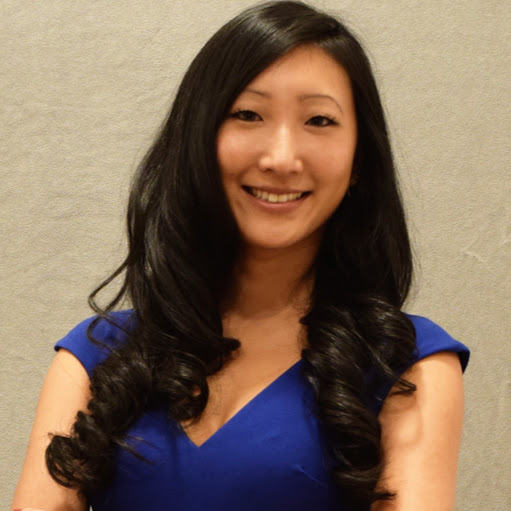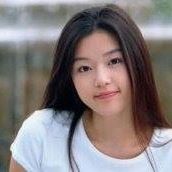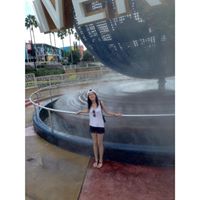Nancy Y Chen
age ~50
from Bellingham, WA
- Also known as:
-
- Nancy Y Chung
- Chen Chen
- Phone and address:
- 4414 Marionberry Ct, Bellingham, WA 98225
Nancy Chen Phones & Addresses
- 4414 Marionberry Ct, Bellingham, WA 98225
- 310 Martin St, Blaine, WA 98230 • 3603329534
- 26 Carey Ave, Watertown, MA 02472
- 26 Carey Ave #7, Watertown, MA 02472
- 5 Carey Ave, Watertown, MA 02472
- 275 Main St #409, Watertown, MA 02472
Specialities
Immigration and Naturalization • Tax
Lawyers & Attorneys

Nancy Chen - Lawyer
view sourceSpecialties:
Immigration and Naturalization
Tax
Tax
ISLN:
908422287
Admitted:
1989
University:
Barnard College, B.A., 1983
Law School:
Boston College Law School, J.D., 1987
Wikipedia References

Nancy Chen
Name / Title
Company / Classification
Phones & Addresses
310 Martin St, Blaine, WA 98230
310 Martin St, Blaine, WA 98230
President
Kapolei Eye Care
Pua Manu MedSpa. Nancy Chen. M.D.. Inc.
Laser Vision Correction. Skin Care. Ophthalmologist
Pua Manu MedSpa. Nancy Chen. M.D.. Inc.
Laser Vision Correction. Skin Care. Ophthalmologist
511 Manawai St, Unit 401, Kapolei, HI 96707-2027
8086742273, 8086742552
8086742273, 8086742552
Manager
New House of Toy Inc
Eating Place
Eating Place
1002 Beacon St, Brookline, MA 02446
Manager
Gaily Salon
Beauty Salon
Beauty Salon
421 Adams St, Boston, MA 02122
6174366838
6174366838
Secretary
HAO MING INCORPORATION
411 Washington St, Brighton, MA 02135
45 Auburn St, Malden, MA 02148
45 Auburn St, Malden, MA 02148
Office Manager
Blane & Birch Bay Family
Dentists
Dentists
310 Martin St, Blaine, WA 98230
3603329534
3603329534
Isbn (Books And Publications)

Breathing Spaces: Qigong, Psychiatry, and Healing in China
view sourceAuthor
Nancy N. Chen
ISBN #
0231128045

Breathing Spaces: Qigong, Psychiatry, and Healing in China
view sourceAuthor
Nancy N. Chen
ISBN #
0231128053

Medicine Doctors

Nancy Chen
view sourceSpecialties:
Internal Medicine
Work:
HealthTexas Provider NetworkTPC Hospitalists Group
3600 Gaston Ave STE 550, Dallas, TX 75246
2148211177 (phone), 2148211193 (fax)
3600 Gaston Ave STE 550, Dallas, TX 75246
2148211177 (phone), 2148211193 (fax)
Education:
Medical School
University of Illinois, Chicago College of Medicine
Graduated: 2007
University of Illinois, Chicago College of Medicine
Graduated: 2007
Procedures:
Lumbar Puncture
Vaccine Administration
Wound Care
Vaccine Administration
Wound Care
Conditions:
Acute Pancreatitis
Acute Renal Failure
Anemia
Atrial Fibrillation and Atrial Flutter
Cardiac Arrhythmia
Acute Renal Failure
Anemia
Atrial Fibrillation and Atrial Flutter
Cardiac Arrhythmia
Languages:
English
Spanish
Spanish
Description:
Dr. Chen graduated from the University of Illinois, Chicago College of Medicine in 2007. She works in Dallas, TX and specializes in Internal Medicine. Dr. Chen is affiliated with Baylor University Medical Center.

Nancy P. Chen
view sourceSpecialties:
Dermatology
Work:
Escondido Dermatology
504 W Msn Ave STE 101, Escondido, CA 92025
7607471980 (phone), 7607472045 (fax)
504 W Msn Ave STE 101, Escondido, CA 92025
7607471980 (phone), 7607472045 (fax)
Education:
Medical School
Tufts University School of Medicine
Graduated: 1998
Tufts University School of Medicine
Graduated: 1998
Procedures:
Destruction of Benign/Premalignant Skin Lesions
Destruction of Skin Lesions
Skin Surgery
Destruction of Skin Lesions
Skin Surgery
Conditions:
Melanoma
Tinea Pedis
Tinea Unguium
Varicose Veins
Acne
Tinea Pedis
Tinea Unguium
Varicose Veins
Acne
Languages:
English
Spanish
Spanish
Description:
Dr. Chen graduated from the Tufts University School of Medicine in 1998. She works in Escondido, CA and specializes in Dermatology. Dr. Chen is affiliated with Palomar Health Downtown Hospital Campus.

Nancy Chen
view sourceSpecialties:
Ophthalmology
Work:
Kapolei Eye Care
511 Manawai St APT 401, Kapolei, HI 96707
8086742273 (phone), 8086742552 (fax)
Eye Surgery Center Of Hawaii
650 Iwilei Rd STE 225, Honolulu, HI 96817
8083564300 (phone), 8083564301 (fax)
511 Manawai St APT 401, Kapolei, HI 96707
8086742273 (phone), 8086742552 (fax)
Eye Surgery Center Of Hawaii
650 Iwilei Rd STE 225, Honolulu, HI 96817
8083564300 (phone), 8083564301 (fax)
Education:
Medical School
Univ De Sao Paulo, Fac De Med, Sao Paulo, Sp, Brazil
Graduated: 1991
Univ De Sao Paulo, Fac De Med, Sao Paulo, Sp, Brazil
Graduated: 1991
Conditions:
Cataract
Keratitis
Acute Conjunctivitis
Glaucoma
Macular Degeneration
Keratitis
Acute Conjunctivitis
Glaucoma
Macular Degeneration
Languages:
Chinese
English
Tagalog
English
Tagalog
Description:
Dr. Chen graduated from the Univ De Sao Paulo, Fac De Med, Sao Paulo, Sp, Brazil in 1991. She works in Kapolei, HI and 1 other location and specializes in Ophthalmology. Dr. Chen is affiliated with Pali Momi Medical Center and Queens Medical Center.

Nancy E. Chen
view sourceSpecialties:
Internal Medicine
Work:
LAC USC Medical Center Internal Medicine
1200 N State St, Los Angeles, CA 90033
3234097556 (phone), 3232263867 (fax)
1200 N State St, Los Angeles, CA 90033
3234097556 (phone), 3232263867 (fax)
Education:
Medical School
University of Southern California Keck School of Medicine
Graduated: 2012
University of Southern California Keck School of Medicine
Graduated: 2012
Languages:
English
Description:
Dr. Chen graduated from the University of Southern California Keck School of Medicine in 2012. She works in Los Angeles, CA and specializes in Internal Medicine.

Nancy Chen
view sourceSpecialties:
Internal Medicine

Nancy Evelyn Chen
view sourceUs Patents
-
Method Of Operating A Discharge Lamp
view source -
US Patent:6844687, Jan 18, 2005
-
Filed:Sep 26, 2003
-
Appl. No.:10/672630
-
Inventors:Nancy H. Chen - Salem MA, US
-
Assignee:Osram Sylvania Inc. - Danvers MA
-
International Classification:H05B 3700
-
US Classification:315246, 315174, 315DIG 5
-
Abstract:A method of operating a discharge lamp includes modulation of lamp power with a first longitudinal mode frequency to reduce segregation of the vapor phase species within the arc tube. The first longitudinal mode excitation frequency is determined by the acoustic response spectrum observed at an upper region of the arc tube when operated vertically. A frequency in an arc-straightening frequency range may also be added to the input power to straighten and center the arc.
-
Method Of Operating A Discharge Lamp System And A Discharge Lamp System Using A Combination Radial And Longitudinal Acoustic Mode To Reduce Vertical Segregation
view source -
US Patent:6924604, Aug 2, 2005
-
Filed:Sep 25, 2003
-
Appl. No.:10/670647
-
Inventors:Nancy H. Chen - Salem MA, US
Scott J. Butler - North Oxford MA, US
Joseph A. Olsen - Gloucester MA, US -
Assignee:Osram Sylvania Inc. - Danvers MA
-
International Classification:H05B037/02
-
US Classification:315209R, 315291, 315307
-
Abstract:A discharge lamp system and method of operating a discharge lamp system in which vertical segregation of vapor phase species is reduced. Lamp power is modulated with an arc-straightening frequency and with a frequency that excites a combination radial plus longitudinal acoustic mode of the lamp. The combination radial plus longitudinal acoustic mode may be a combination first radial mode and nth longitudinal acoustic mode and may be excited with a single power frequency or a swept power frequency range. The two frequencies may be provided at the same time, or separately where the modulation at the arc-straightening frequency is 2 to 16 times longer than a subsequent modulation at the combination radial plus longitudinal acoustic mode.
-
Dimmable Metal Halide Hid Lamp With Good Color Consistency
view source -
US Patent:7245075, Jul 17, 2007
-
Filed:Apr 11, 2005
-
Appl. No.:11/103080
-
Inventors:Nancy H. Chen - North Andover MA, US
Joseph A. Olsen - Gloucester MA, US -
Assignee:Osram Sylvania Inc. - Danvers MA
-
International Classification:H01J 17/20
H01J 61/12 -
US Classification:313576, 313637, 313643, 313568, 313570
-
Abstract:Metal halide lighting with good color during dimming may be obtained. An appropriate balance of commonly used metal halides (NaI, DyI, CeI, CaI, TlI) is dosed in the lamp. No mercury is used. A higher than typical xenon fill pressure from 50 to 500 Kilopascals may be used to help control thermal properties and voltage. If necessary, modulation of the power at acoustic resonance frequencies may be used to straighten and center the arc. Efficient and pleasant white output is obtained. As the power is reduced, the chromaticity either (1) remains fairly constant or (2) drifts acceptably towards warm pinkish colors. Large factors of attenuation in output can be realized. The lumen output was reduced by at least a factor of twenty in one sample as the power was dimmed from 70 to 20 watts.
-
Control Method And Ballast For Run-Up Of Metal Halide Lamp
view source -
US Patent:7589477, Sep 15, 2009
-
Filed:Sep 25, 2007
-
Appl. No.:11/860759
-
Inventors:Nancy H. Chen - North Andover MA, US
Joseph A. Olsen - Gloucester MA, US -
Assignee:OSRAM Sylvania Inc. - Danvers MA
-
International Classification:H05B 37/00
-
US Classification:315247, 315224, 315308
-
Abstract:A method of controlling run-up of a metal halide lamp that has a nominal (full) light output during steady state operation and that has a current limit I, includes a lamp ballast sensing lamp current and voltage and calculating power, and evaluating requested power Pand requested current Ito operate the lamp at the nominal light output during run-up to steady state operation, supplying Ito operate the lamp when I≧I, and supplying Pto operate the lamp when I
-
Fast Run-Up Of Metal Halide Lamp By Power Modulation At Acoustic Resonance Frequency
view source -
US Patent:7633237, Dec 15, 2009
-
Filed:Sep 25, 2007
-
Appl. No.:11/860834
-
Inventors:Nancy H. Chen - North Andover MA, US
Joseph A. Olsen - Gloucester MA, US -
Assignee:OSRAM SYLVANIA Inc. - Danvers MA
-
International Classification:H05B 37/02
-
US Classification:315224, 315291, 315246, 315209 R, 315DIG 2
-
Abstract:A method of controlling run-up of a metal halide lamp that has a nominal (full) light output during steady state operation and that has a current limit I, includes, during run-up of the metal halide lamp to steady state operation, evaluating requested power Pand requested current Ito operate the lamp at the nominal light output Lduring the run-up, supplying Ito operate the lamp so long as I≧Iand supplying Pto operate the lamp when I
-
Method And Gas Discharge Lamp With Filter To Control Chromaticity Drift During Dimming
view source -
US Patent:8198823, Jun 12, 2012
-
Filed:Nov 20, 2009
-
Appl. No.:12/622801
-
Inventors:Nancy H. Chen - North Andover MA, US
-
Assignee:Osram Sylvania Inc. - Danvers MA
-
International Classification:H05B 37/02
-
US Classification:315291, 315297, 315307
-
Abstract:Techniques are disclosed that allow for the use of metal halide lamps in dimming applications, as well as other discharge lamps susceptible to dimming-induced chromaticity drift. Examination of such lamps reveals that some of the spectral changes that cause chromaticity drift during dimming are localized in narrow band regions of the spectrum, and lamp emission in these regions is enhanced (either increased or decreased) relative to the rest of the spectrum. Selective filtering of the enhanced emission caused by dimming can be used to reduce chromaticity shift. For instance, a filter deposited on and/or integrated into a lamp component (such as the arc tube, shroud, and/or outer jacket) operates to block transmission of those regions of the spectrum.
-
Light Output Control Technique By Estimating Lamp Efficacy As A Function Of Temperature And Power
view source -
US Patent:8378594, Feb 19, 2013
-
Filed:Apr 29, 2010
-
Appl. No.:12/769813
-
Inventors:Nancy H. Chen - North Andover MA, US
-
Assignee:Osram Sylvania Inc. - Danvers MA
-
International Classification:H05B 37/02
-
US Classification:315309, 315 50, 315117, 315118
-
Abstract:Techniques are disclosed for controlling the light output of a lamp, where lamp efficacy is estimated as a function of estimated lamp temperature and instantaneous input power, or as a function of estimated lamp temperature only. Whether efficacy is estimated as a function of temperature and power, or as a function of temperature only can depend on changes in the lamp operating scenario. The techniques estimate lamp temperature by tracking energy input to and losses from (losses such as radiation, conduction, emission) the lamp arc tube, and determine the corresponding instantaneous light producing ability. The techniques may further be implemented to deliver the appropriate power command to obtain a desired light output. The techniques can be applied towards a general control in which arbitrary or custom light output vs. time paths are produced, and may be implemented by a processor programmed or otherwise configured to execute the desired control scheme.
-
Metal Halide Lamps With Fast Run-Up And Methods Of Operating The Same
view source -
US Patent:20130009570, Jan 10, 2013
-
Filed:Jul 6, 2011
-
Appl. No.:13/176964
-
Inventors:Nancy H. Chen - North Andover MA, US
James A. Avallon - Beverly MA, US
Edgar G. Estupiñán - Peabody MA, US -
Assignee:OSRAM SYLVANIA INC. - Danvers MA
-
International Classification:H05B 41/36
H01J 61/20 -
US Classification:315326, 313639
-
Abstract:The present disclosure describes metal halide lamps having a discharge vessel, a discharge space, and at least one electrode extending into the discharge vessel in a sealed fashion so as to be in contact with the discharge space. A fill gas, at least one fill material, and optionally at least one volatile material are present in the discharge space. In some cases, the lamps can exhibit at least one of reduced run-up time, increased initial light output, and long life, while remaining useful for general lighting applications. Also described are methods for operating such metal halide lamps.
News

Live updates: The world welcomes 2022 with muted celebrations as COVID-19 cases surge
view source- "It's been a difficult few weeks and, unfortunately, we have a tough few weeks ahead of us as well," Dr. Dave Chokski told CBS News correspondent Nancy Chen. "We all have to dig deep muster our energy and will, and I have a deep conviction and a belief that we will get through this."
- Date: Dec 31, 2021
- Category: More news
- Source: Google
Flickr
Plaxo

Nancy Chen
view source
Nancy Chen
view sourceAustin,TX,USARecruiting Specialist at Starwood Hotels and Resor...

Nancy Chen
view sourceHome Team of America

Nancy Chen
view sourceNorth Brunswick, NJ

Nancy Chen
view sourcePine Marketing Pte Ltd

Nancy Chen
view sourceZHEJIANG HUAYANG LEISURE PRODUCTS CO
Googleplus

Nancy Chen
Lived:
Cambridge, MA
Work:
Amazon.com
Education:
Harvard University

Nancy Chen
Work:
New York City Economic Development Corporation
Education:
Barnard College - Latin American Studies

Nancy Chen
Work:
Path Interactive
Education:
New York University Stern School of Business - Marketing

Nancy Chen

Nancy Chen

Nancy Chen
Education:
University of British Columbia - Applied Animal Biology
Tagline:
Doe.

Nancy Chen
Relationship:
Single

Nancy Chen
Education:
Ming Chuan University - Finance
Classmates

Nancy Chen
view sourceSchools:
university of california Irvine CA 1992-1994
Community:
Stephen Henry, Maria Defelice

Nancy Chen
view sourceSchools:
Maple Grove Education Center Yarmouth Swaziland 1999-2003
Community:
Krista Brown

Nancy Chan (Chen)
view sourceSchools:
Snowden International High School Boston MA 2000-2004
Community:
Kimberly Helmboldt, Mose Davis, Donisha Powell

Nancy D Chen (Hughes)
view sourceSchools:
Mississinewa High School Gas City IN 1962-1966
Community:
Kathy Summersill, David Cregar

Nancy Chen
view sourceSchools:
Kingslake Public School Toronto Morocco 1996-2000
Community:
Cathie Abbott, Rick Bloxam, Pauline Chan, Ruth Yates

Nancy Eng (Chen)
view sourceSchools:
Strathcona Tweedsmuir High School Calgary Azores 1964-1968
Community:
Patti Melville, Moira Cameron, Jamie Amos

Nancy Chen
view sourceSchools:
North Plainfield High School North Plainfield NJ 1991-1995
Community:
Melissa Olson, Danielle Mckay, Kim Love, Mister Rodgers, Stephen Kaplan, Evelyn Dorabialski, Stacey Jordon, Mike Simpson, Samantha Fox

Ridge Hill Elementary Sch...
view sourceGraduates:
Melissa Pfeiffer (1998-2002),
Nancy Chen (2000-2002),
Mary Dinan (1972-1979),
David Wiel (1991-1995),
Christie Bownes (1996-2000),
Jessica Hopkinson (1999-2001)
Nancy Chen (2000-2002),
Mary Dinan (1972-1979),
David Wiel (1991-1995),
Christie Bownes (1996-2000),
Jessica Hopkinson (1999-2001)
Youtube

Nancy Chen
view source
Nancy Chen
view source
Nancy Chen
view source
Nancy Chen Er
view source
Nancy Purin Chen
view source
Nancy Chen Lane
view source
Nancy Chen Lee
view source
Nancy Chen Que
view sourceGet Report for Nancy Y Chen from Bellingham, WA, age ~50












![[Nancy Chen] Tracking short-term evolution in a pe... [Nancy Chen] Tracking short-term evolution in a pe...](https://i.ytimg.com/vi/1dKEge5q2P4/hq720.jpg?sqp=-oaymwEcCNAFEJQDSFXyq4qpAw4IARUAAIhCGAFwAcABBg==&rs=AOn4CLBauqyZ7islVmQvPI0U1-78yHi1Mg)
